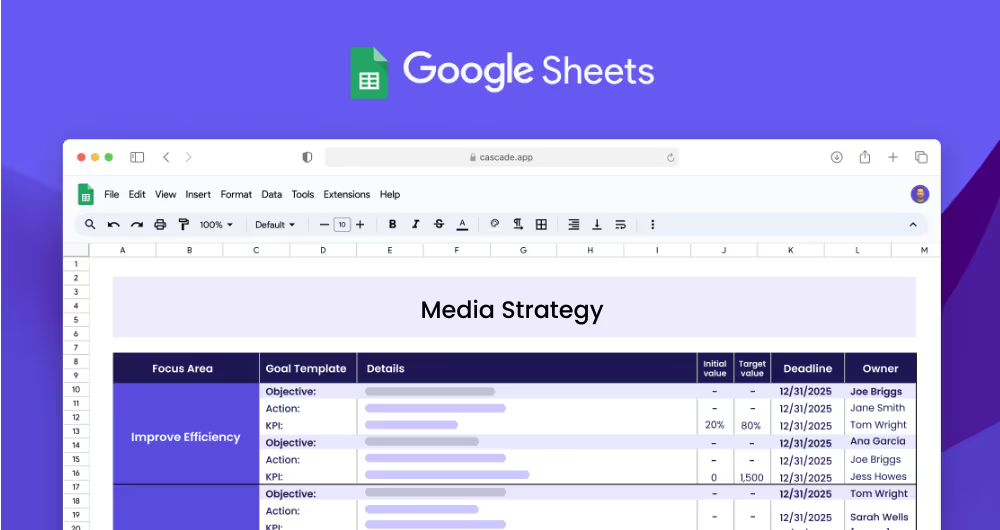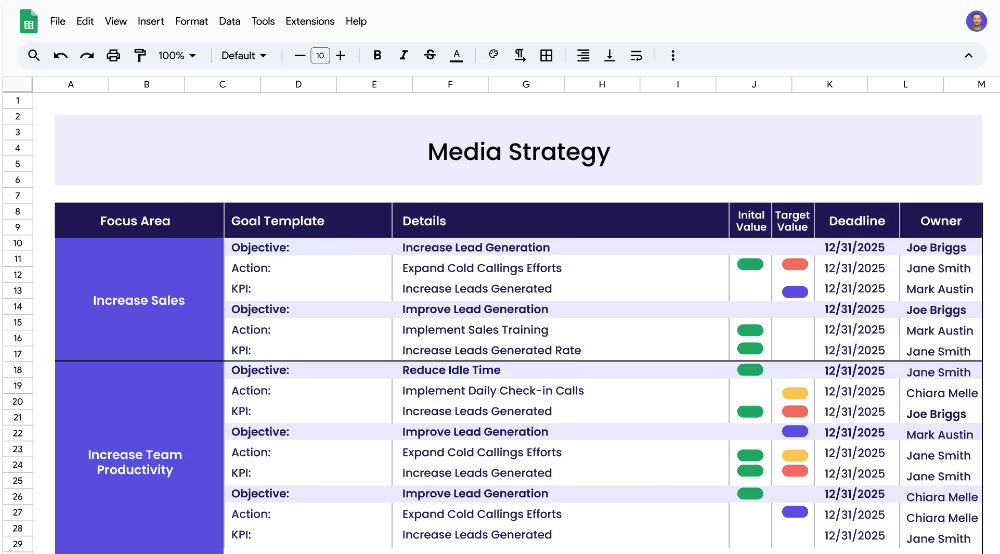A media strategy is an organized plan of action designed to reach out to an audience through various channels of media. It is developed by carefully considering the goals of a business, organization, or individual, and then creating a plan to achieve those goals by leveraging the right combination of media and channels to reach the desired target audience. It is a crucial step in any marketing plan, and can help to ensure that the message is being effectively communicated.
Each focus area has its own objectives, projects, and KPIs to ensure that the strategy is comprehensive and effective.
This media strategy template is designed for marketing teams of all sizes and industries who are looking to create a comprehensive plan for using media to reach their desired audiences. It provides a comprehensive structure for outlining focus areas, objectives, and KPIs, as well as outlining the projects necessary to achieve those goals. The template can also be used to track progress and measure success.
The first step in creating a successful media strategy is to define clear examples of focus areas. Focus areas are the broad topics that the strategy will address, such as increasing brand awareness, increasing website traffic, or increasing conversions. Defining the focus areas first will help to ensure that the strategy is focused on the right areas.
Once the focus areas have been defined, the next step is to think about the objectives that could fall under each focus area. Objectives are more specific tasks that need to be achieved in order to reach the desired goal. For example, under the focus area of increasing brand awareness, the objectives could include increasing social media engagement and increasing social media followers.
Once the objectives have been identified, the next step is to set measurable targets, also known as KPIs. These targets should be specific and measurable, and should include an initial value, a target value, and a unit of measure. For example, under the objective of increasing social media engagement, the KPI could be to increase post reach, with an initial value of 1000, a target value of 10000, and the unit of measure being ‘people’.
Once the KPIs have been identified, the next step is to implement projects related to each KPI in order to achieve the desired results. These projects should be specific and actionable, and should be tracked to ensure success. For example, under the KPI of increasing post reach, a related project could be to increase the frequency of content posts.
Transition from static spreadsheets to the dynamic, real-time features of Cascade Strategy Execution Software. Whether you are defining objectives or measuring KPIs, Cascade furnishes a robust platform that not only streamlines strategic planning but ensures that every element of your strategy is interconnected and clearly aligned with your organizational goals. Sign-up for free or book a demo with one of our strategy experts to experience a more integrated approach to strategy execution.


